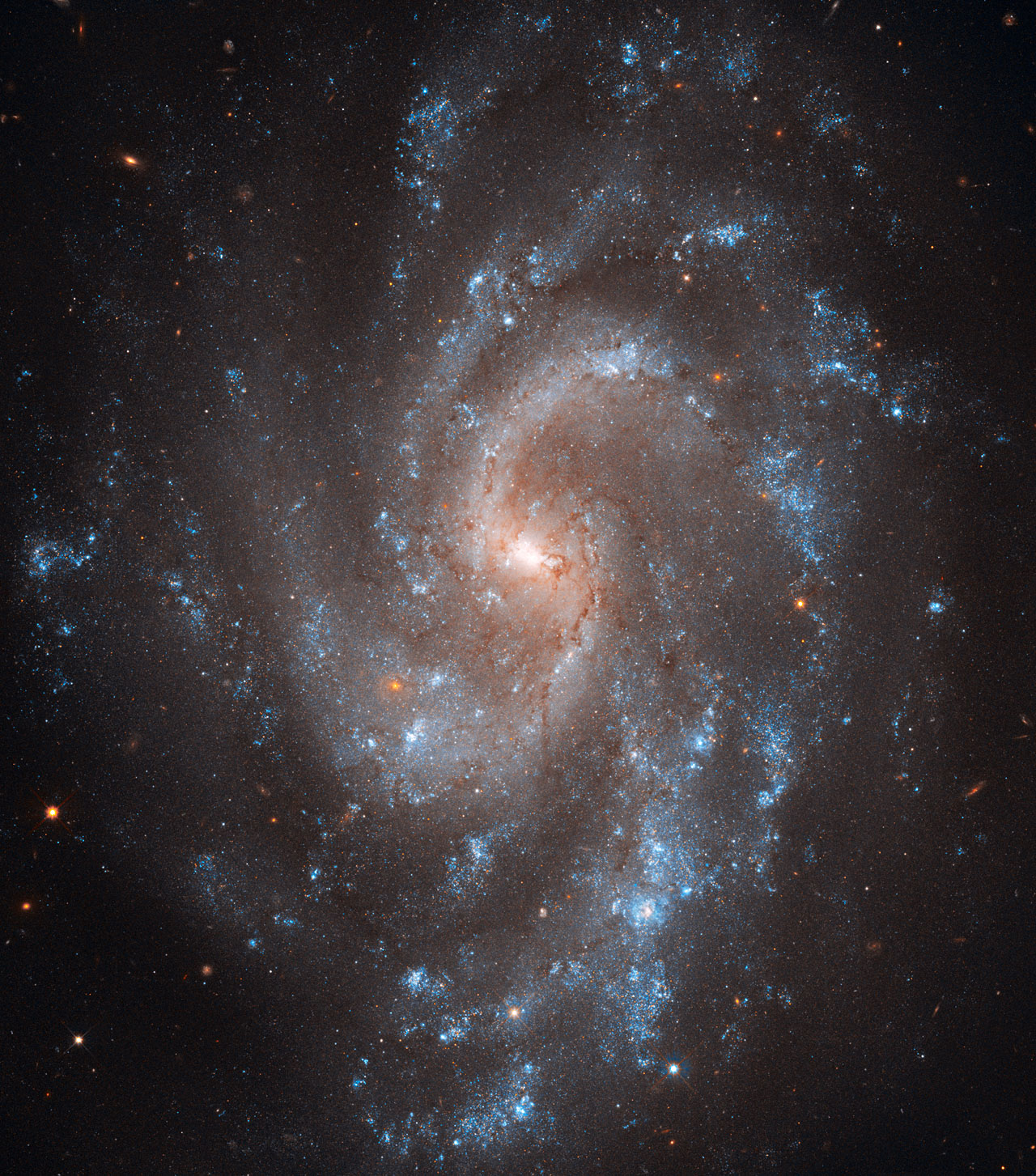STScI | HubbleSite | 2011 Mar 14
Hubble’s View of NGC 5584Astronomers using NASA's Hubble Space Telescope have ruled out an alternate theory on the nature of dark energy after recalculating the expansion rate of the universe to unprecedented accuracy. The universe appears to be expanding at an ever increasing rate, and one explanation is that the universe is filled with a dark energy that works in the opposite way of gravity. One alternative to that hypothesis is that an enormous bubble of relatively empty space eight billion light-years across surrounds our galactic neighborhood. If we lived near the center of this void, observations of galaxies being pushed away from each other at accelerating speeds would be an illusion. This hypothesis has been invalidated because astronomers have refined their current understanding of the universe's present expansion rate to an uncertainty of just 3.3 percent. The new measurement reduces the error margin by 30 percent over Hubble's previous best measurement in 2009. The results are reported in the April 1 issue of The Astrophysical Journal.
Amongst the myriad stars in spiral galaxy NGC 5584, imaged in visible light with Hubble's Wide Field Camera 3 between January and April 2010, are pulsating stars called Cepheid variables and one recent Type Ia supernova, a special class of exploding stars. Astronomers used Cepheid variables and Type Ia supernovae as reliable distance markers to measure the universe's expansion rate. NGC 5584 lies 72 million light-years away in the constellation Virgo and was one of the eight galaxies astronomers studied to measure the universe's expansion rate. In those galaxies, astronomers analyzed more than 600 Cepheid variables, including 250 in NGC 5584. Cepheid variables pulsate at a rate matched closely by their intrinsic brightness, making them ideal for measuring distances to relatively nearby galaxies. Type Ia supernovae flare with the same brightness and are brilliant enough to be seen from relatively longer distances. Astronomers search for Type Ia supernovae in nearby galaxies containing Cepheid variables so they can compare true brightness of both types of stars. That brightness information is used to calibrate the measurement of Type Ia supernova in far-flung galaxies and calculate their distance from Earth. Once astronomers know accurate distances to galaxies near and far, they can determine the universe's expansion rate.
Credit: NASA, ESA, A. Riess (STScI/JHU), L. Macri (Texas A&M University), and Hubble Heritage Team (STScI/AURA)
Hubble Heritage March 2011 Release
The brilliant, blue glow of young stars trace the graceful spiral arms of galaxy NGC 5584 in this Hubble Space Telescope image. Thin, dark dust lanes appear to be flowing from the yellowish core, where older stars reside. The reddish dots sprinkled throughout the image are most likely background galaxies.
Among the galaxy’s myriad stars are pulsating stars called Cepheid variables and one recent Type Ia supernova, a special class of exploding star. Astronomers use Cepheid variables and Type Ia supernovae as reliable distance markers to measure the universe’s expansion rate. NGC 5584 was one of eight galaxies astronomers studied to measure the universe’s expansion rate. In those galaxies, astronomers analyzed more than 600 Cepheid variables, including 250 in NGC 5584.
Cepheid variables pulsate at a rate matched closely by their intrinsic brightness, making them ideal for measuring distances to relatively nearby galaxies. Type Ia supernovae flare with the same brightness and are brilliant enough to be seen from relatively longer distances.
Astronomers search for Type Ia supernovae in nearby galaxies containing Cepheid variables so they can compare true brightness of both types of stars. They then use that information to calibrate the measurement of Type Ia supernovae in far-flung galaxies and calculate their distance from Earth. Once astronomers know accurate distances to galaxies near and far, they can determine the universe’s expansion rate.
The image is a composite of several exposures taken in visible light between January and April 2010 with Hubble’s Wide Field Camera 3.
NGC 5584 resides 72 million light-years away in the constellation Virgo.

